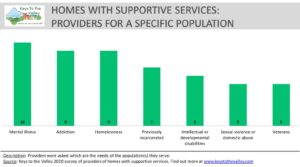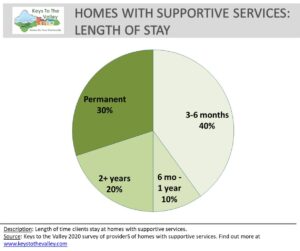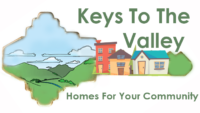Providers
The results reported here include input from 12 organizations that provide homes with supportive services. Six of these organizations are located within the region. The following organizations participated:
- Families in Transition – New Horizons (mainly Manchester, NH)
- Fellowship Housing Opportunities (Concord, NH)
- Haven (Rockingham & Strafford County, NH)
- HCRS (Ludlow, Springfield, Brattleboro & Bellows Falls, VT)
- Head Rest (Lebanon, NH)
- Lakes Region Mental Health Center (Laconia, NH)
- Monadnock Family Services (Cheshire County, NH)
- Riverbend CMHC (Concord & Boscowain, NH)
- Springfield Supported Housing Program (Springfield, VT)
- Sullivan County Department of Corrections (Program under development, Claremont, NH)
- Twin Pines Housing (Lebanon, NH)
- Visions for Creative Housing Solutions (Enfield, NH)
Clients
Together, these organizations serve 628 individuals at a time, 86 of which are served within the region covering a diversity of needs (Figure 2). Organizations identified the following people as those who they would like to house but cannot due to secondary issues:
- those with a criminal history
- poor rental references and credit history
- dual diagnosis, sexual offenders
- significant mobility disabilities
- people with pets
- actively using substances
- low-income households who are above income thresholds for certain properties.
These populations reflect limitations in facilities, staffing, community support, finances, and regulations. Half of participating organizations serve largely low-income households, either as a requirement or by happenstance. All organizations provide financial assistance in some form, ranging from a sliding scale to accepting Section 8 vouchers to apartment subsidies.
Organizations were asked how far their clients travel to participate in their program (with 2 skipping the question due to variability). The majority of organizations have 60 to 100% of their clients traveling within 30 miles. Only 4 organizations indicated on average 10% traveling more than 60 miles, with one organization serving mostly those who travel more than 100 miles.

Living Space
Organizations that provide homes with supportive services maintain a variety of living environments. These include but are not limited to staffed residences, independent apartments, multi-bedroom apartments, and congregate living. Most organizations included in this survey provide both communal and solo living environments with only one providing communal-only and two solo-only. The average stay in these facilities ranges, as illustrated in Figure 3. Within the region, 35% of surveyed beds reflect permanent stays, with the remaining representing a year or less. Only one organization has a strict maximum stay for residents.

Capacity
No organization identified a problem filling beds and only two identified seasonal variation with higher usage during winter months. All but one organization has a waitlist. These waitlists range between 10 to over 100 potential clients. In the region waitlist length ranged from 25 to 100 people in length. Organizations highlighted the following barriers to their functioning at full capacity: delays in waitlist responses, communication, transportation, funding for staff, and proper facilities (I.e., transitional units, solo units).
All organizations say there is more need. There were four active plans to results in a total of 35 additional beds, only one plan is within the region for 10 beds. Organizations highlighted the following barriers to expansion: funding, operational support, affordable land with public transit and water/sewer, high cost of development, and neighborhood reluctance.
In your own words…
- “The State continues to provide hotels for households experiencing housing crisis. If we had more apartments available, we could house them for less and work with them around the housing.”
- “Unmet need for sober living in the area, would expand in this area if at all. People build communities and find employment while in this program but then can’t find housing upon completion.”
- “Many of our clients are living with their abusers while trying to apply and locate affordable permanent housing so they can leave.”
- “The need is so great. Parents are supporting their adult children with disabilities; they are aging and need relief. Young adults want independence, a place of their own.”
- “Well designed supportive housing can create communities that allow people to stabilize, regardless of their specific ‘need’. The benefits of improved physical and mental health may not be felt immediately making it hard to get sufficient financial support.”

